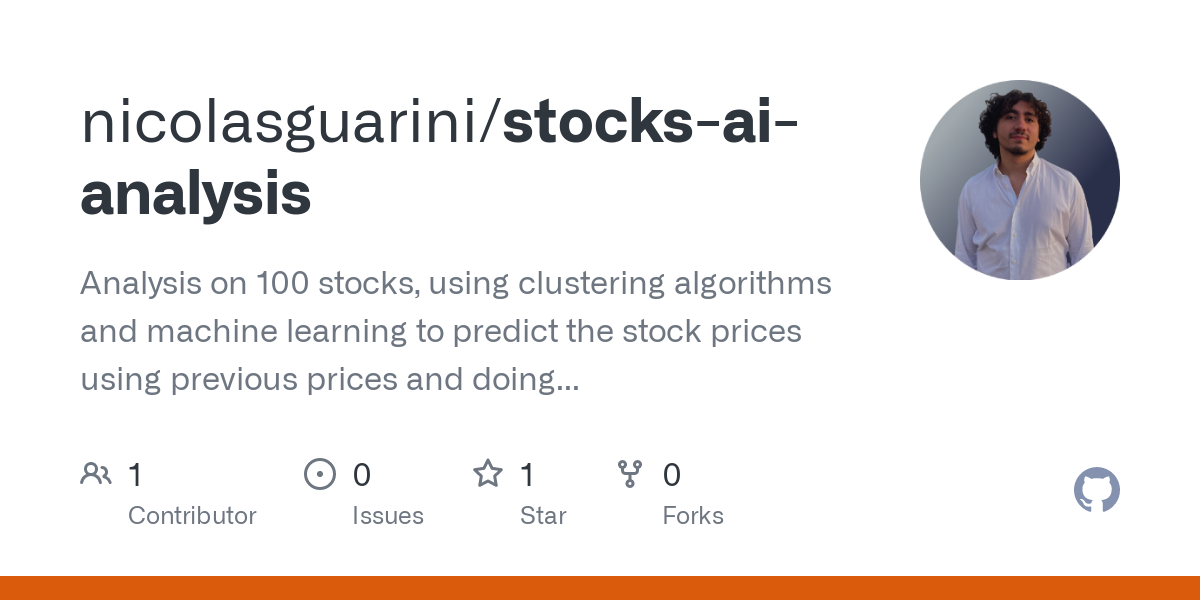Top 10 Tips For Diversifying Data Sources For Ai Stock Trading, From The Penny To The copyright
Diversifying data sources is essential for the development of AI-driven stock trading strategies that can be applied to trading in penny stocks as well as copyright markets. Here are 10 tips to incorporate and diversify data sources in AI trading:
1. Use multiple financial market feeds
TIP: Make use of a variety of sources of data from financial institutions that include exchanges for stocks (including copyright exchanges), OTC platforms, and OTC platforms.
Penny stocks: Nasdaq Markets (OTC), Pink Sheets, OTC Markets.
copyright: copyright, copyright, copyright, etc.
Why: Relying on one source can cause inaccurate or inaccurate information.
2. Social Media Sentiment: Incorporate data from social media
TIP: Examine the sentiment of platforms such as Twitter, Reddit, and StockTwits.
For Penny Stocks For Penny Stocks: Follow niche forums like r/pennystocks or StockTwits boards.
For copyright For copyright: Concentrate on Twitter hashtags, Telegram groups, and specific sentiment tools for copyright like LunarCrush.
The reason: Social Media may create fear or create hype, especially with speculative stocks.
3. Utilize macroeconomic and economic data
Include information on interest rates, GDP, inflation, and employment metrics.
The reason is that economic developments generally influence market behavior and provide context for price changes.
4. Use on-Chain Data to copyright
Tip: Collect blockchain data, such as:
The activity of the wallet
Transaction volumes.
Inflows of exchange, and outflows.
What are the benefits of on-chain metrics? They provide unique insight into the market’s activity and investor behavior in copyright.
5. Include alternative Data Sources
Tip: Integrate non-traditional types of data, like:
Weather patterns in the field of agriculture (and other sectors).
Satellite imagery (for energy or logistics).
Web Traffic Analytics (for consumer perception)
Why it is important to use alternative data to alpha-generation.
6. Monitor News Feeds & Event Data
Tip: Scan with NLP tools (NLP).
News headlines
Press releases.
Announcements regarding regulations
What’s the reason? News often triggers short-term volatility which is why it is crucial for both penny stocks and copyright trading.
7. Follow Technical Indicators and Track them in Markets
Tip: Diversify your technical data inputs by using multiple indicators
Moving Averages.
RSI is the abbreviation for Relative Strength Index.
MACD (Moving Average Convergence Divergence).
What’s the reason? A mix of indicators can improve predictive accuracy, and it avoids overreliance on one signal.
8. Include real-time and historical information.
Tip: Blend historical data for backtesting with real-time data for live trading.
Why: Historical data validates strategies, while real-time data ensures they adapt to current market conditions.
9. Monitor the Regulatory Data
Keep up-to-date with new tax laws, changes to policies as well as other pertinent information.
For penny stocks: Keep an eye on SEC filings and compliance updates.
Monitor government regulations and monitor copyright use and bans.
Why: Regulation changes can have an immediate and significant influence on market changes.
10. AI can be employed to clean and normalize data
AI tools can be used to help process raw data.
Remove duplicates.
Fill in the blanks by using the missing information.
Standardize formats across multiple sources.
Why is this? Clean and normalized data lets your AI model to perform optimally without distortions.
Make use of cloud-based software for data integration
Tip: To consolidate data effectively, you should use cloud platforms, such as AWS Data Exchange Snowflake or Google BigQuery.
Cloud-based solutions can handle large volumes of data from different sources. This makes it much easier to analyze the data, manage and integrate different data sets.
You can boost the sturdiness as well as the adaptability and resilience of your AI strategies by diversifying your data sources. This is the case for penny cryptos, stocks as well as other strategies for trading. Have a look at the best ai stock trading bot free examples for blog advice including ai copyright trading, stock analysis app, trading ai, stock analysis app, coincheckup, ai stock picker, ai stock trading, ai predictor, ai investment platform, stock analysis app and more.

Top 10 Tips To Making Use Of Ai Tools To Ai Prediction Of Stock Prices And Investment
The use of tools for backtesting is critical to improving AI stock selection. Backtesting gives insight into the performance of an AI-driven strategy in past market conditions. Here are 10 top suggestions for backtesting AI stock pickers.
1. Use high-quality historic data
Tips: Ensure that the tool you choose to use to backtest uses complete and reliable historic data. This includes prices for stocks and trading volume, dividends and earnings reports as in addition to macroeconomic indicators.
Why: High-quality data ensures that backtesting results reflect realistic market conditions. Backtesting results could be misled by incomplete or inaccurate information, and this could influence the accuracy of your strategy.
2. Make sure to include realistic costs for trading and slippage
Backtesting: Include realistic trading costs when you backtest. This includes commissions (including transaction fees), slippage, market impact, and slippage.
Why: Failing to account for the cost of trading and slippage can overstate the potential returns of your AI model. Incorporating these factors helps ensure that the results of the backtest are more precise.
3. Tests in a variety of market conditions
Tip Backtesting your AI Stock picker in a variety of market conditions, such as bull markets or bear markets. Also, include periods of volatility (e.g. an economic crisis or market corrections).
What’s the reason? AI model performance can be different in different markets. Testing in various conditions assures that your plan is robust and able to change with market cycles.
4. Use Walk-Forward Tests
Tip Implement a walk-forward test which tests the model by testing it against a a sliding window of historical information and then validating performance against data that are not in the sample.
What is the reason? Walk-forward tests can help test the predictive power of AI models that are based on untested data. This is a more accurate gauge of the performance of AI models in real-world conditions as opposed to static backtesting.
5. Ensure Proper Overfitting Prevention
Tip Beware of overfitting by testing the model with different time periods and ensuring it doesn’t pick up irregularities or noise from historical data.
The reason is that overfitting happens when the model is too closely tailored towards the past data. As a result, it’s not as effective in forecasting market movements in the future. A well-balanced model should generalize across a variety of market conditions.
6. Optimize Parameters During Backtesting
Use backtesting to optimize important parameters.
What’s the reason? By optimizing these parameters, you can increase the AI model’s performance. As mentioned previously it is essential to make sure that this optimization will not lead to overfitting.
7. Drawdown Analysis & Risk Management Incorporated
Tip Include risk-management techniques like stop losses, ratios of risk to reward, and size of the position in backtesting. This will allow you to assess the strength of your strategy in the face of large drawdowns.
Why: Effective Risk Management is crucial to long-term success. By modeling your AI model’s handling of risk, you will be able to identify any vulnerabilities and adjust the strategy accordingly.
8. Study Key Metrics Apart From Returns
The Sharpe ratio is a key performance metric that goes beyond the simple return.
Why: These metrics provide a more comprehensive understanding of your AI strategy’s risk-adjusted returns. When focusing solely on the returns, one could overlook periods that are high risk or volatile.
9. Simulate different asset classifications and Strategies
Tips: Test your AI model with different types of assets, like ETFs, stocks, or cryptocurrencies, and various investment strategies, including the mean-reversion investment or value investing, momentum investing, etc.
The reason: By looking at the AI model’s adaptability it is possible to determine its suitability for various types of investment, markets, and high-risk assets such as copyright.
10. Refresh your backtesting routinely and fine-tune the approach
Tip: Ensure that your backtesting system is always updated with the latest data available on the market. This will allow it to change and adapt to the changing market conditions as well as new AI features in the model.
Why: The market is dynamic as should your backtesting. Regular updates keep your AI model up-to-date and ensure that you are getting the most effective results from your backtest.
Use Monte Carlo simulations to determine the level of risk
Utilize Monte Carlo to simulate a number of different outcomes. This can be done by performing multiple simulations using different input scenarios.
What is the reason: Monte Carlo Simulations can help you determine the probability of a variety of results. This is particularly helpful for volatile markets like copyright.
These tips will help you to optimize and assess your AI stock selection tool by utilizing backtesting tools. A thorough backtesting will ensure that your AI-driven investment strategies are stable, adaptable and reliable. This lets you make educated decisions about market volatility. See the top helpful hints about using ai to trade stocks for site recommendations including stock trading ai, ai for investing, ai trading app, ai trade, ai stock price prediction, incite, free ai trading bot, best ai for stock trading, penny ai stocks, copyright ai and more.
